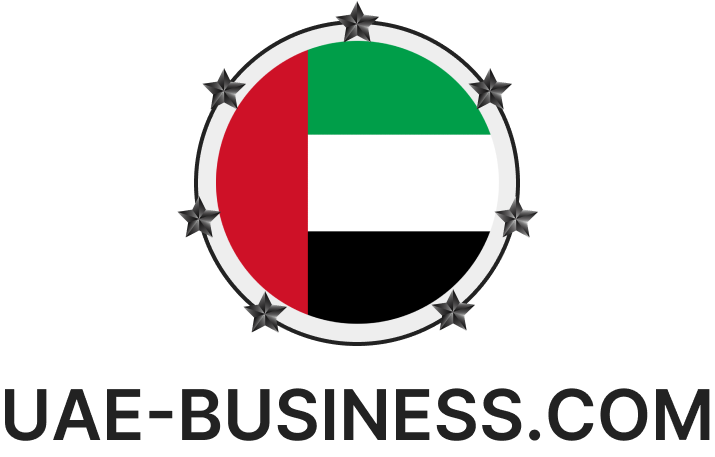How Innovation Drives Competitive Advantage for SMEs
 Ratish Pandey
Ratish Pandey
Business Coach & Founder
Ethique Advisory
Small and Medium-sized Enterprises (SMEs) are outpaced by larger firms when it comes to resources, capital, and reach. This can be especially challenging in today’s rapidly changing business environment. These same constraints can often spur unique opportunities for creative solutions and strategic agility, acting as the bedrock for innovation.
This innovation provides SMEs the edge to outpace their competitors, scale their business, and ultimately succeed over the long term. SMEs make up 99% of all firms and employ nearly 70% of the population, so they must survive and grow in the competitive market.
Today, we will explore how SMEs can leverage innovation to transform challenging circumstances into powerful catalysts for growth.
Understanding Innovation in SMEs
SME innovation is multifaceted, going beyond product innovation to include enhancements in processes and the transformation of business models. SMEs can incrementally improve their businesses by making changes to existing products or services or opt for disruptive innovation that changes the status quo by entering entirely new markets or value networks.
Let’s look at the various innovations an SME can engage in.
Incremental innovation can involve a small consumer electronics manufacturer switching from aluminum to titanium to improve durability and reduce weight, while disruptive innovation could include an example of an SME introducing renewable energy solutions in a community predominantly using expensive traditional energy sources.
Architectural innovation implies that SMEs reconfigure existing product technologies into new applications, while radical innovation means that SMEs can introduce groundbreaking technologies that redefine industry practices.
A good example of architectural innovation is a tech-focused SME integrating GPS technology with mobile apps to offer real-time tracking services for public transportation. In contrast, radical innovation could include a biotech firm developing a new drug delivery system that drastically improves the efficiency of existing treatments.
Any of these innovations can help SMEs carve out niches, respond swiftly to changing consumer demands, and outmaneuver larger competitors.
Benefits of Innovation for SMEs
Pursuing innovation can go a long way in helping SMEs to succeed, pivot, and sustain in the marketplace by achieving one or more of the following:
Market Differentiation: Product / Service innovation can help design a product/services or a range of products/services that address a unique need or market demand or help enter a new market, assisting the company in carve a niche for itself, making it easy for the company to capture customer attention, for instance, a study found that companies in the industrial sectors that expanded to adjacent industries reported generating a third of their growth from these new sectors, indicating that an expansion into new product lines or markets could pave the way for significant growth.
Improving Customer Satisfaction: factoring in customer feedback to improve product evolution or bring out a new product altogether helps address the changing needs and requirements, helping meet & exceed customer expectations. It helps enhance customer satisfaction and earn loyalty over the long term. The focus on innovation can ensure that the company keeps an ear to the ground and listens to customers and changing needs and factors the same into the upcoming offering to keep its offerings relevant and appealing to an ever-evolving market, drive repeat customers, and increase organic sales through positive word-of-mouth.
Operational Margins: Innovation is at the heart of driving operational efficiency, driven by improved processes and systems that can save significant costs and result in better resource utilisation. By adopting new technologies, and streamlining operations that reduce waste, lower operational costs, and enhance productivity, SMEs extend their runway while delivering their products and services more efficiently.
Adaptability and Resiliency: encouraging innovation and creative thinking creates a learning organisation that promotes open Dialogue. It, in turn, builds more ownership among employees, thereby building agility. It makes the company more agile when responding to unexpected market changes or shifting consumer preferences. Organizations looking for more – more business, sales & profits should have innovation at the heart of their growth strategy. You can quickly pivot in response to new opportunities or to shifting consumer preferences, ensuring that the business remains resilient.
Revenue Growth: Innovation is the foundation to explore new revenue streams and opportunities, whether through the introduction of cutting-edge products or through entry into new markets, which can significantly boost revenues and profits, driving the long-term success of the business. A study on SMEs found a robust positive relationship between technological dynamics and competitive growth, indicating that technological adaptability significantly contributes to competitive advantages and business growth.
Strategies for Fostering Innovation in SMEs
We have established that innovation has to be a way of life for SMEs and MSMEs looking to grow, scale, flourish, and maintain their competitiveness.
If this is so simple, then why do not all companies have a learning culture that fuels innovation? The fact is that while one can do it, one needs to work at it. Here are a few approaches/strategies to adopt for success.
Building a Creative Culture:
SMEs must foster a workplace that values creativity and supports experimentation, naturally driving innovation. To cultivate an innovative culture, leadership must set the tone. Leaders should maintain an open mind, encourage discussion, welcome new ideas, and, importantly, accept failures. This culture should be bolstered by open and honest communication across all levels to achieve alignment and commitment to the company’s goals and vision. Recognizing and rewarding innovative efforts, both big and small, that contribute to company efficiency and growth adds the final touch.
Investments in Technology:
In today’s world, staying competitive means keeping up with new trends, technologies, and tools relevant to your industry. Technology cannot be ignored. Early adoption provides the leverage to test and utilize technology for your company’s betterment. Whether it serves as an enabler, supports innovation, enhances operational efficiency, boosts employee productivity, or improves customer engagement, investing in technology is essential.
Creative Collaboration:
A powerful tool for SMEs to access resources they may lack, particularly in research and product development. By partnering with other businesses, research institutions, or innovation hubs, SMEs can gain access to new resources, expertise, and technologies. These collaborations pave the way for developing innovative solutions that might not be achievable in isolation.
Customer Feedback: Listening to your customers and potential customers is key. Customer feedback provides insights into their needs, expectations, and evolving purchase journeys. Incorporating this feedback into your company’s product improvement, R&D, and planning ensures that your offerings remain relevant. Additionally, acting on customer feedback builds stronger brand loyalty, as customers appreciate knowing their opinions are valued and acted upon. This customer-driven approach can drive innovation and help meet market demands effectively.
What Challenges do SMEs face in creating a culture of innovation?
While an increasing number of SMEs are working to keep innovation as a key essence of their organizational culture, they are often challenged. Let’s look at some of the possible obstacles that they battle.
Lack of Resources: Financial runway is always a challenge for SMEs. Often plagued with financial constraints, these businesses work with small teams, making it difficult to allocate funds and manpower specifically for driving innovation. This scarcity can sometimes delay or even completely halt the development of new products or services, as the focus remains on immediate operational needs rather than long-term innovation. For instance, according to a study of over 600,000 SMEs, the average firm holds a Daily Cash balance of just $12,100, making it challenging to compete with larger firms with tens of millions in cash.
Risk Averse Behaviour: SMEs typically operate with thinner safety nets, which can make the stakes of experimenting with new ideas being higher than for typical firms. The fear of failure can significantly impede the adoption of innovative strategies and can force SMEs to maintain the status quo, which can impede the adoption of innovation strategies that require initial investments with uncertain returns.
Market Uncertainties: Unpredictable market conditions can make it difficult for SMEs to plan and implement long-term innovative projects due to the shifting market dynamics. For instance, the recession and global logistical challenges caused by lockdowns during the pandemic impacted SMEs as it resulted in higher shipping costs by up to 80%, impacting the margins, as opposed to larger firms, which just increased the price of their products to offset these costs.
Regulatory Barriers: Compliance with changing industry standards and new regulations requires significant resources, which can be particularly taxing for SMEs, limiting their ability to introduce innovative products or new processes, especially when the regulations lag behind technological advancements. Recent examples include legislation on digital assets such as cryptocurrency and against foundational models for artificial intelligence impeding SMEs looking to break out in the industry.
SMEs will need to identify their challenges and find ways and means to address them through strategic planning and external support, such as government incentives or partnerships, to create a more conducive environment for innovation.
Bottom Line
Innovation is crucial for SME growth and could be crucial for those enterprises looking to carve out a competitive position in the current dynamic market. While SMEs looking to pursue innovation face numerous barriers, such as resource constraints, market uncertainties, and regulatory challenges, the rewards of growth and long-term competitiveness justify the efforts. Ultimately, when SMEs embrace innovation, they can turn challenging circumstances into opportunities for resilience and differentiation in the market.
